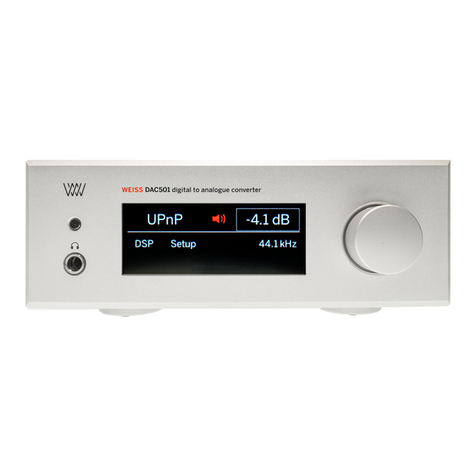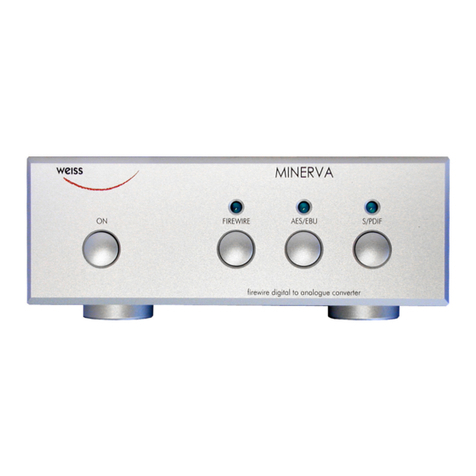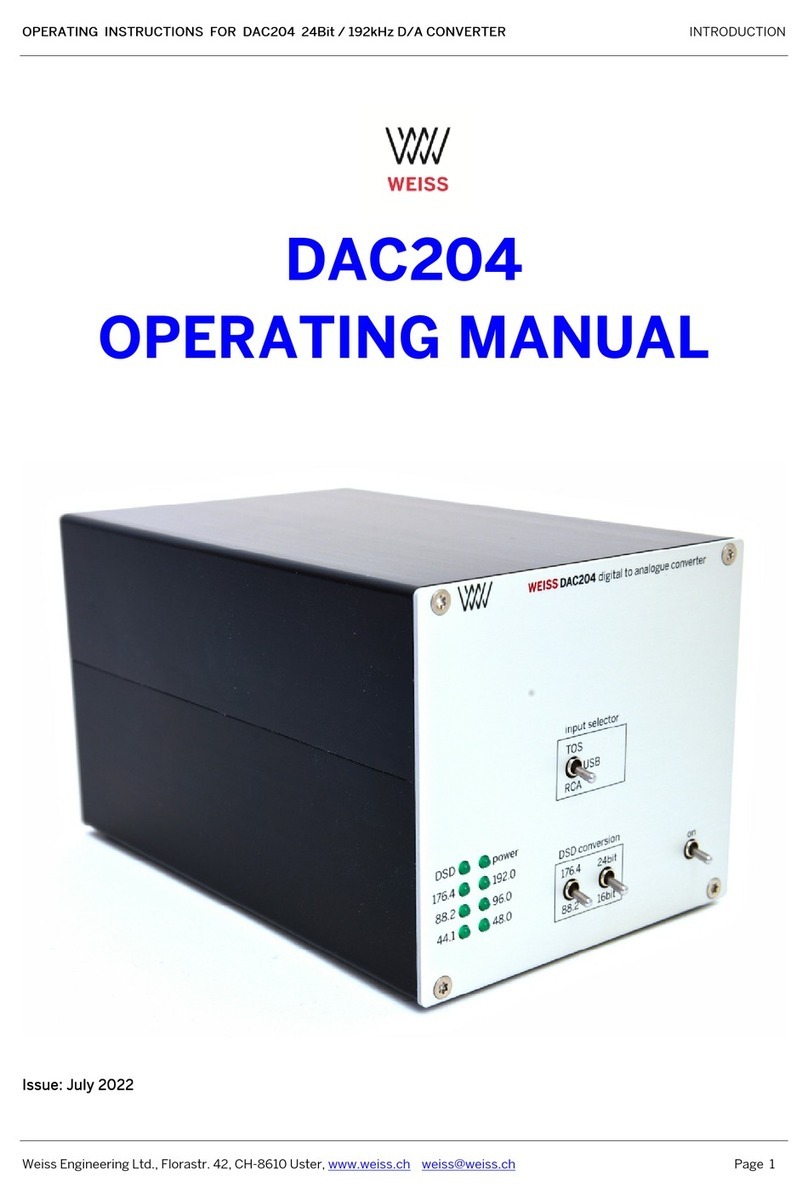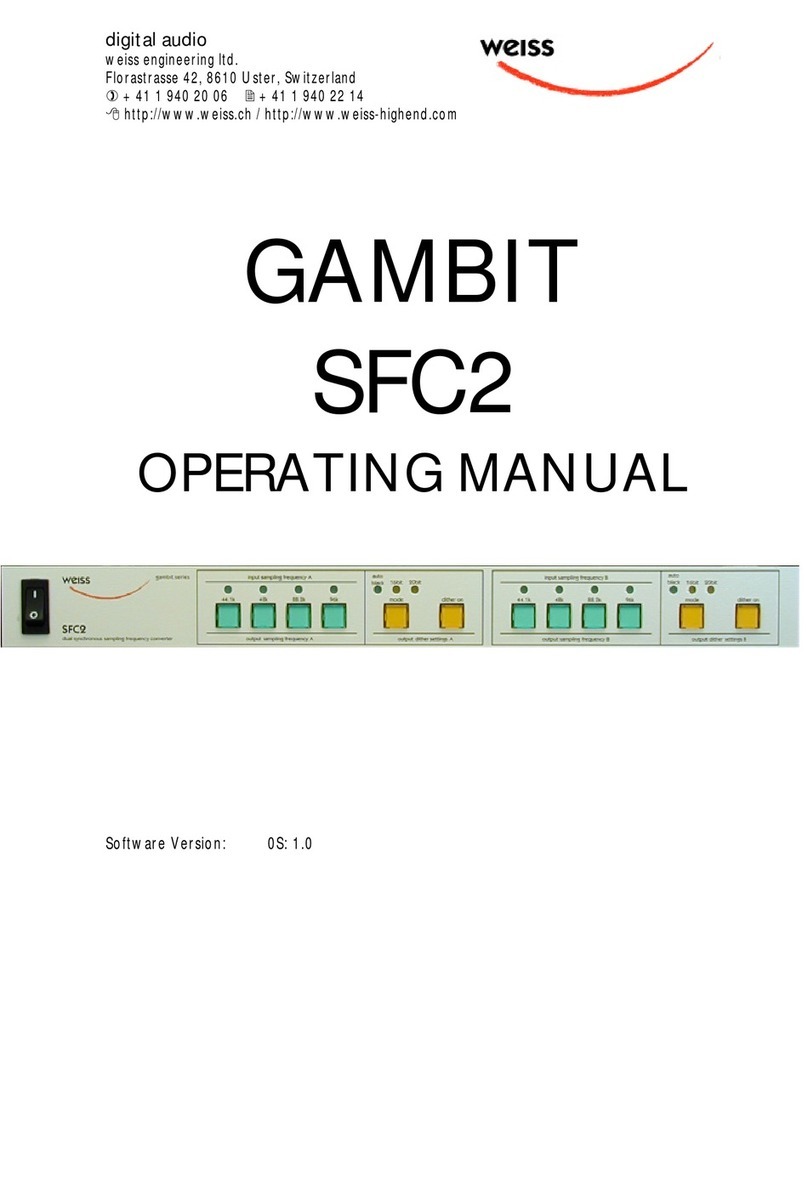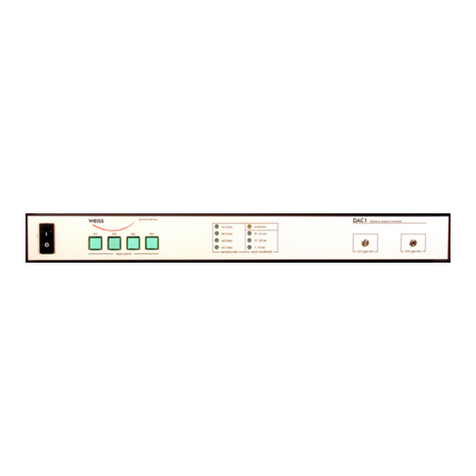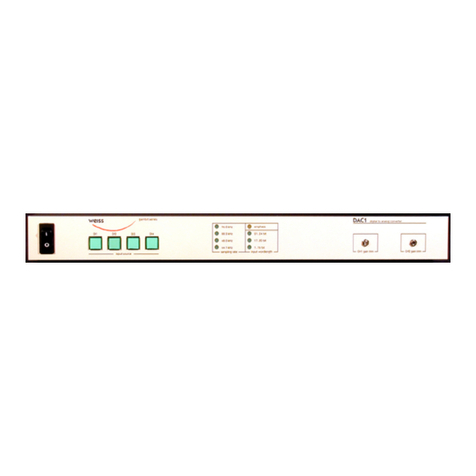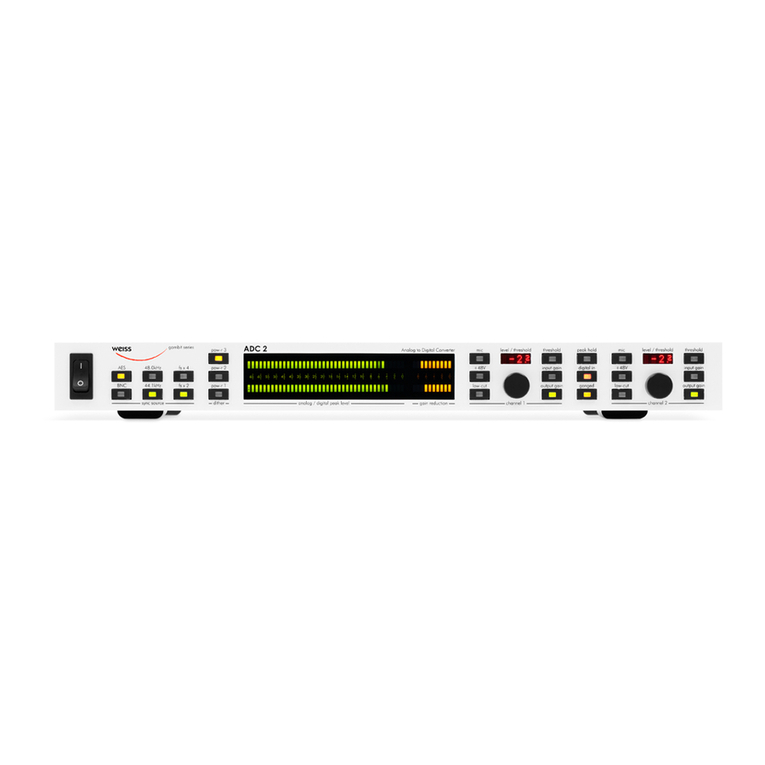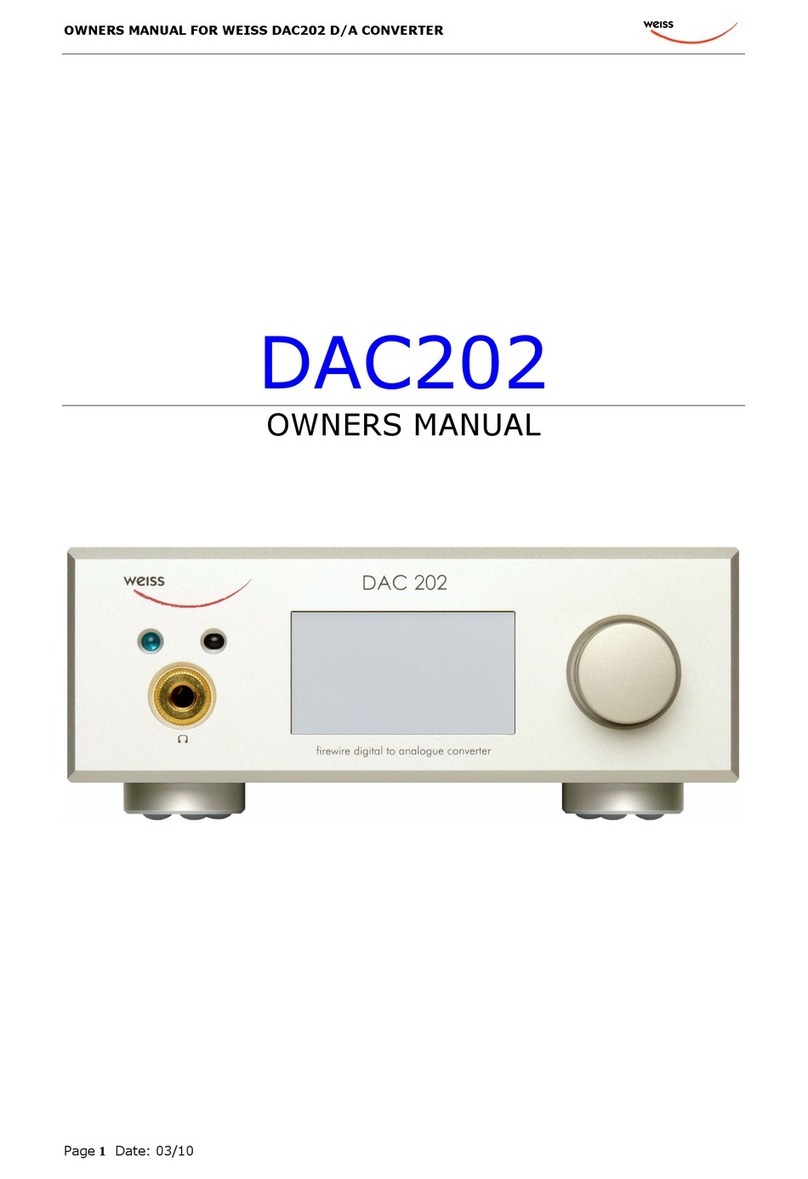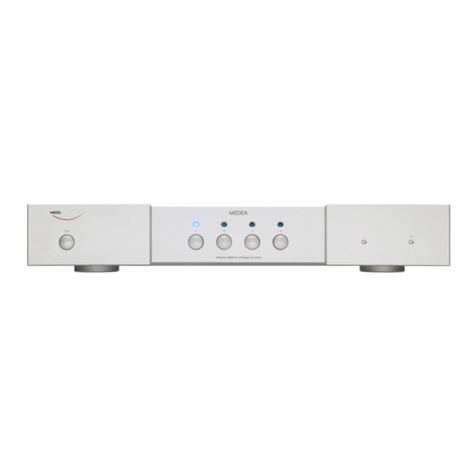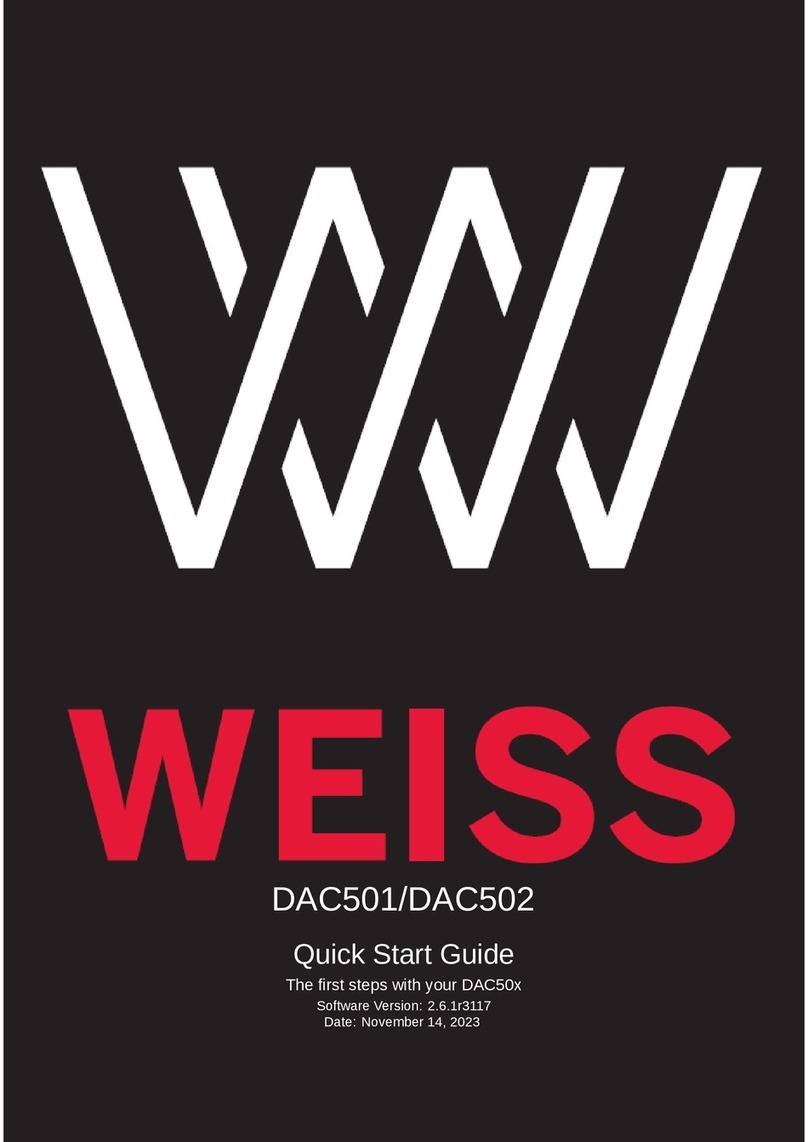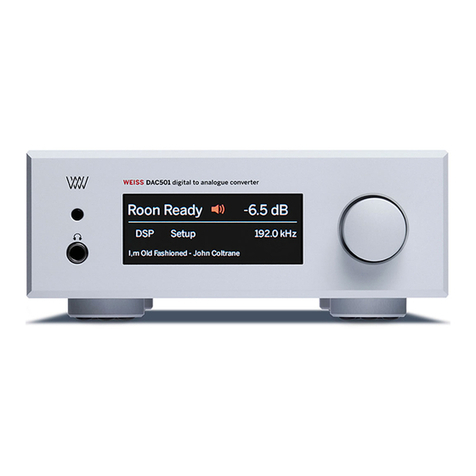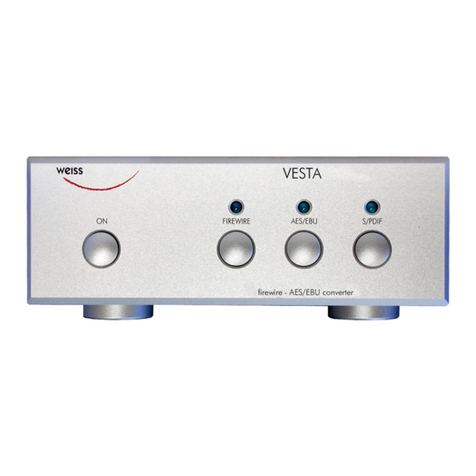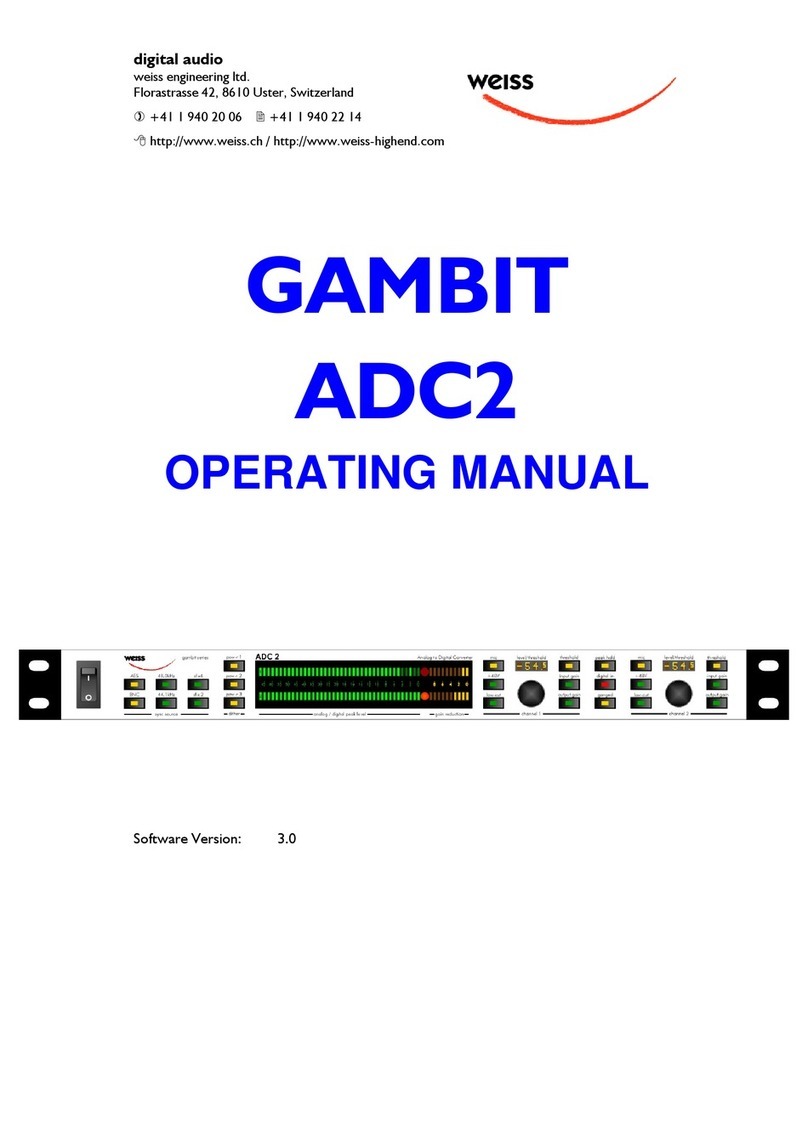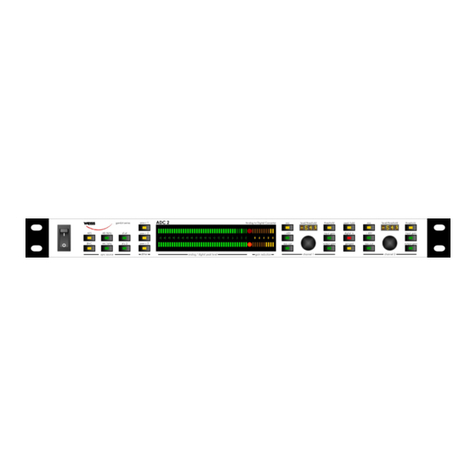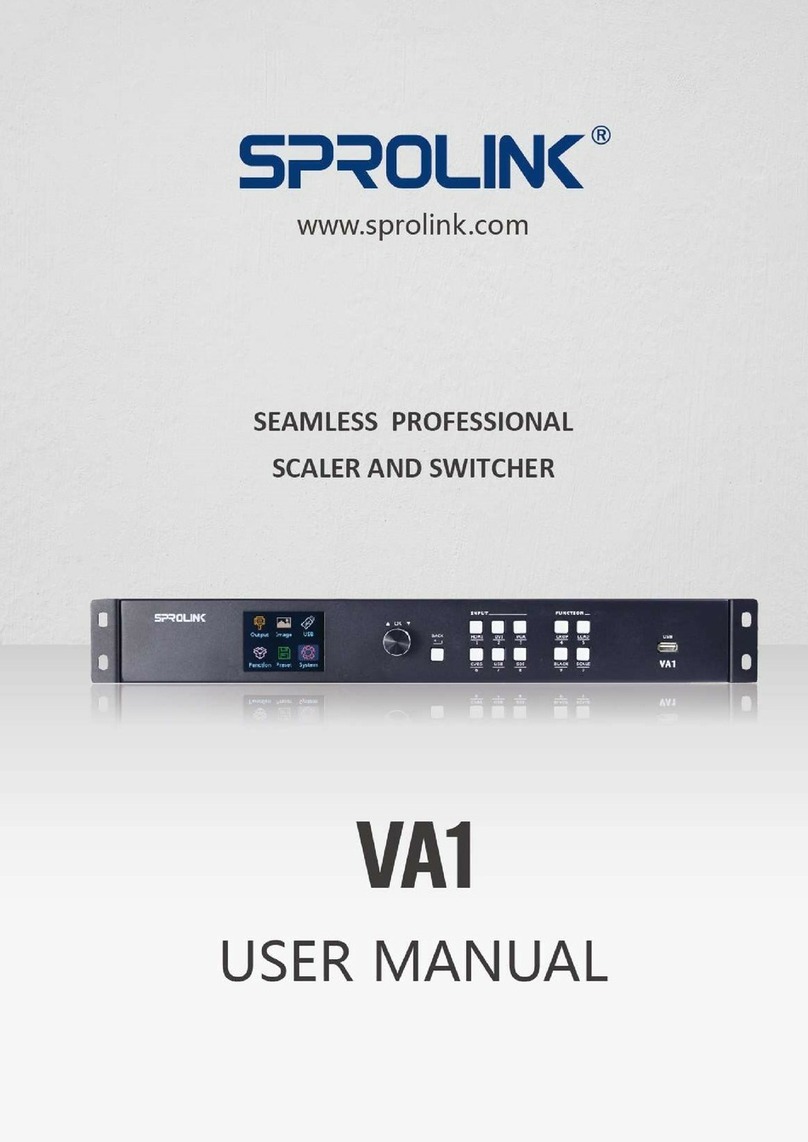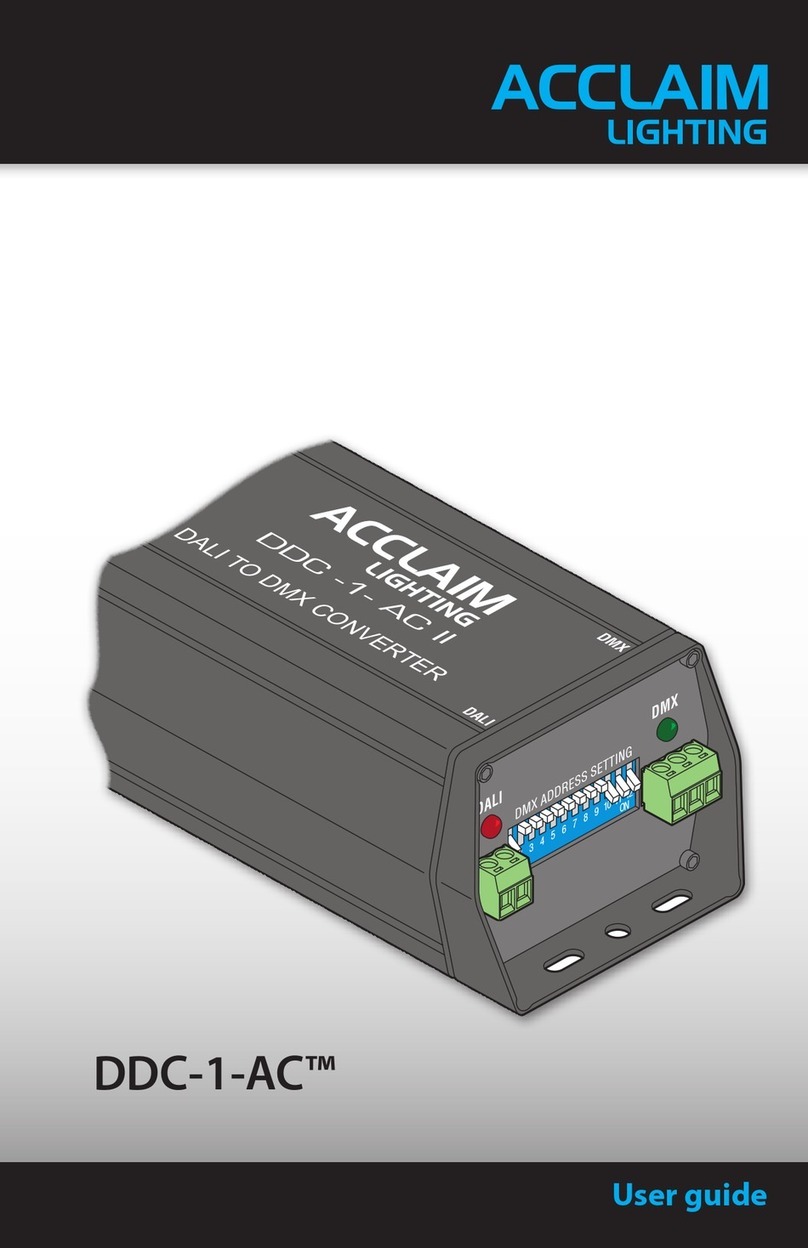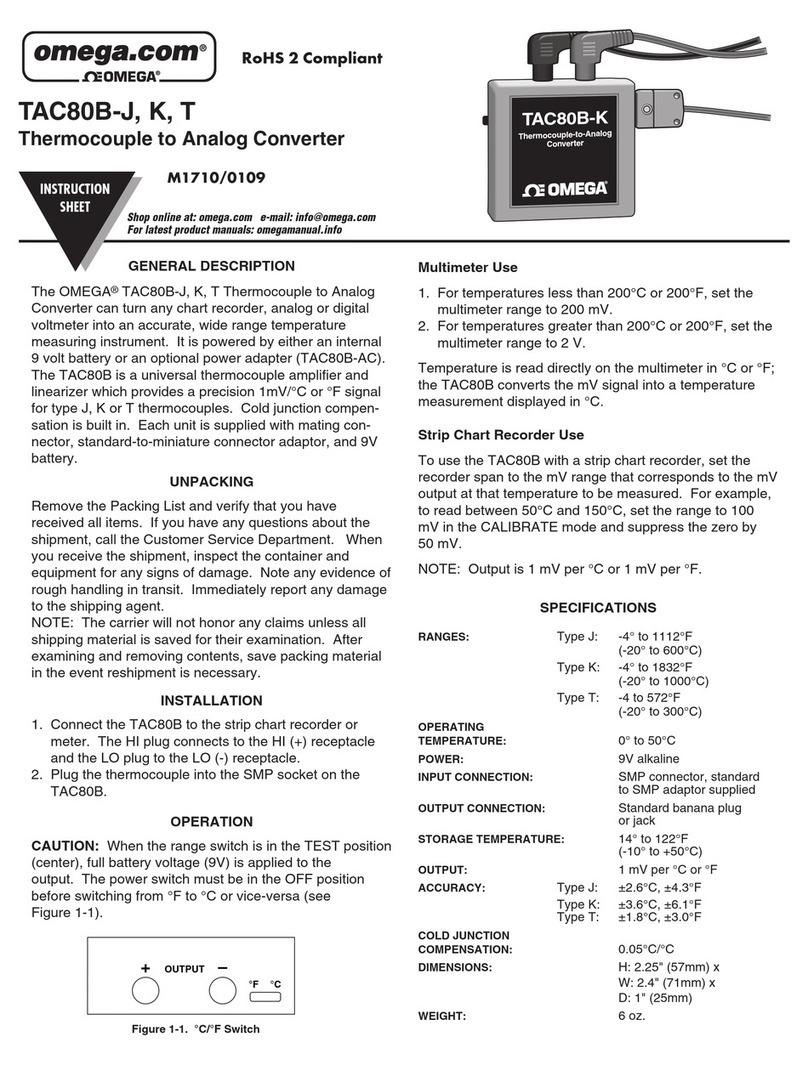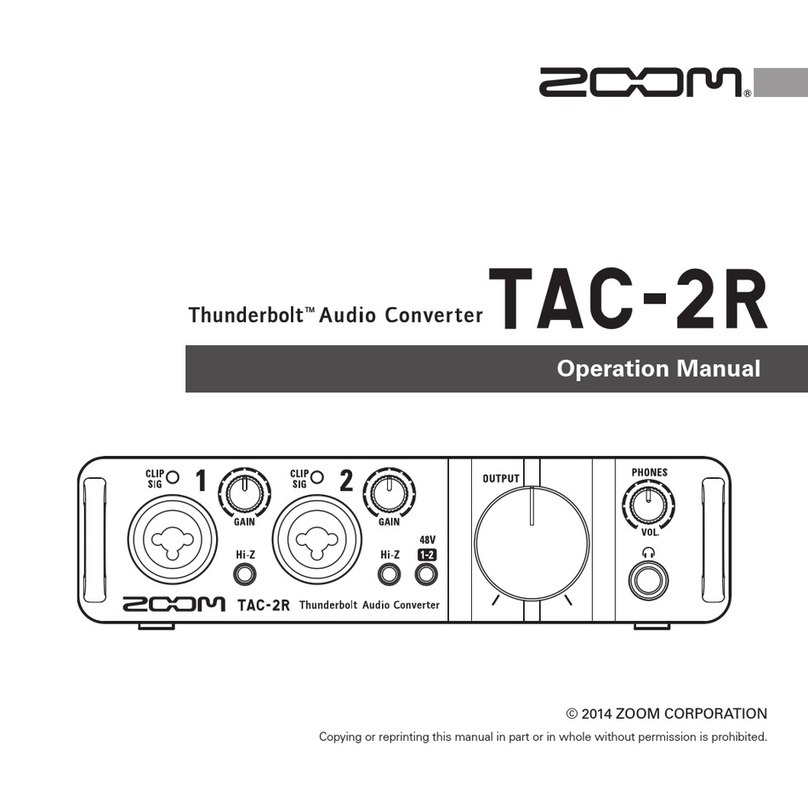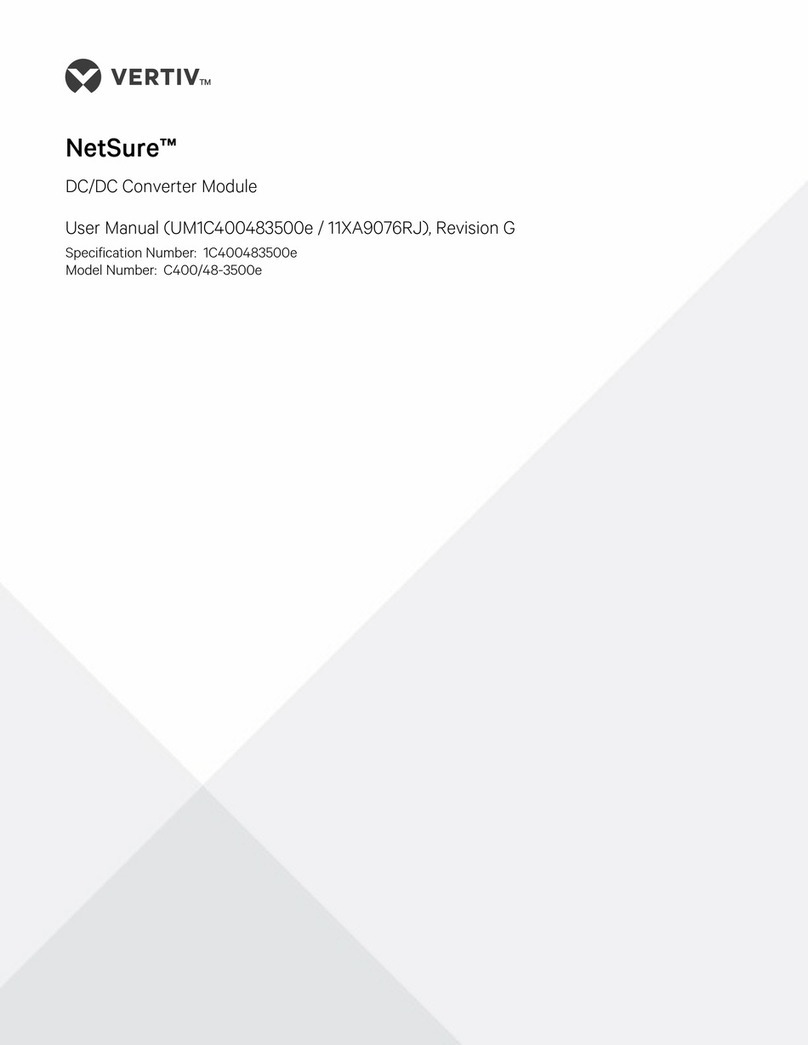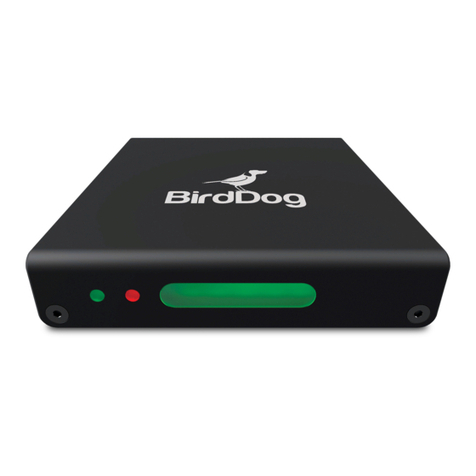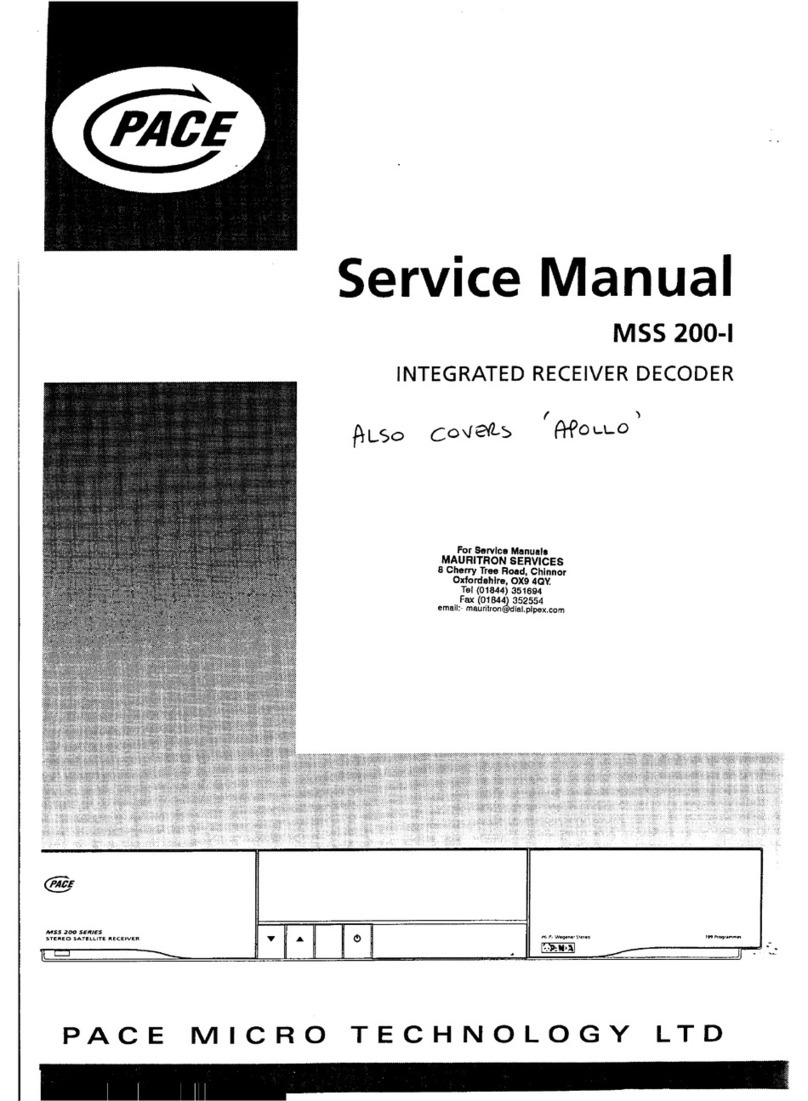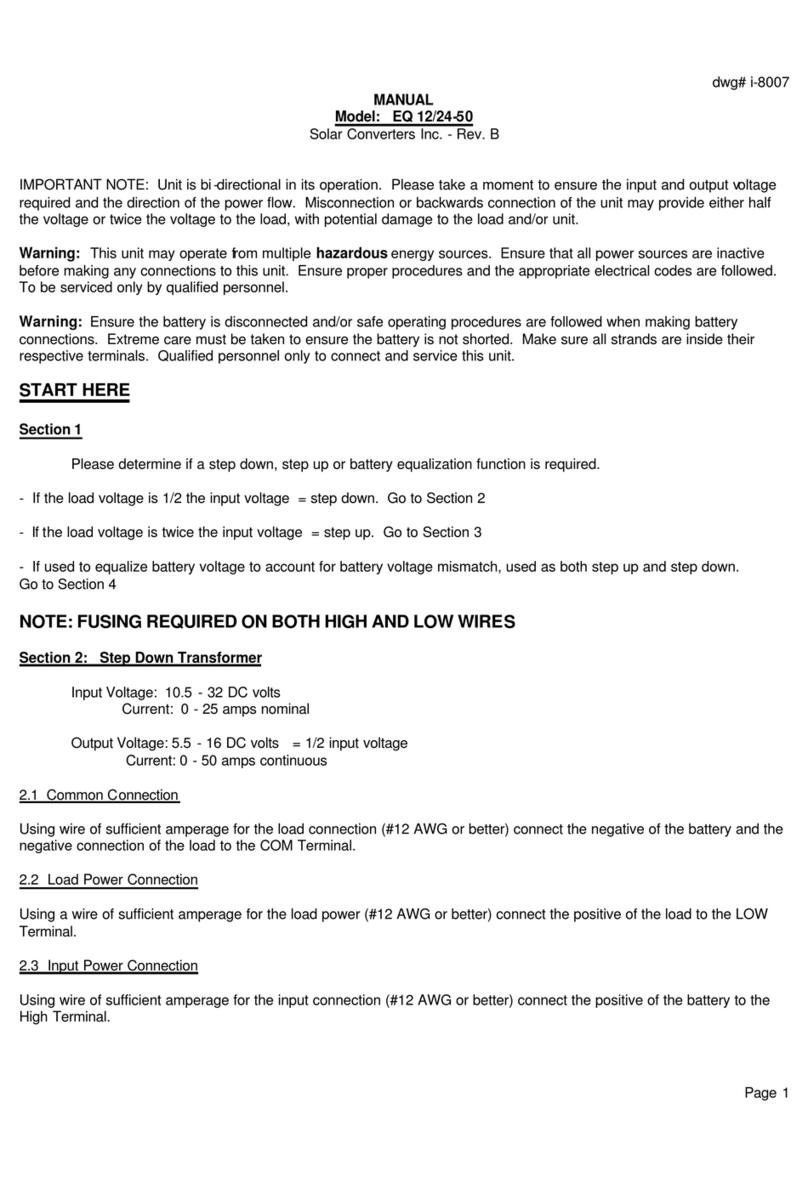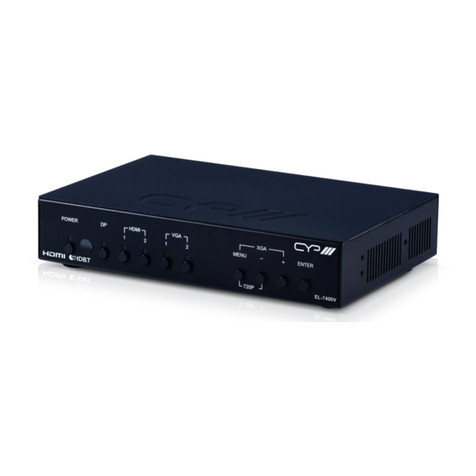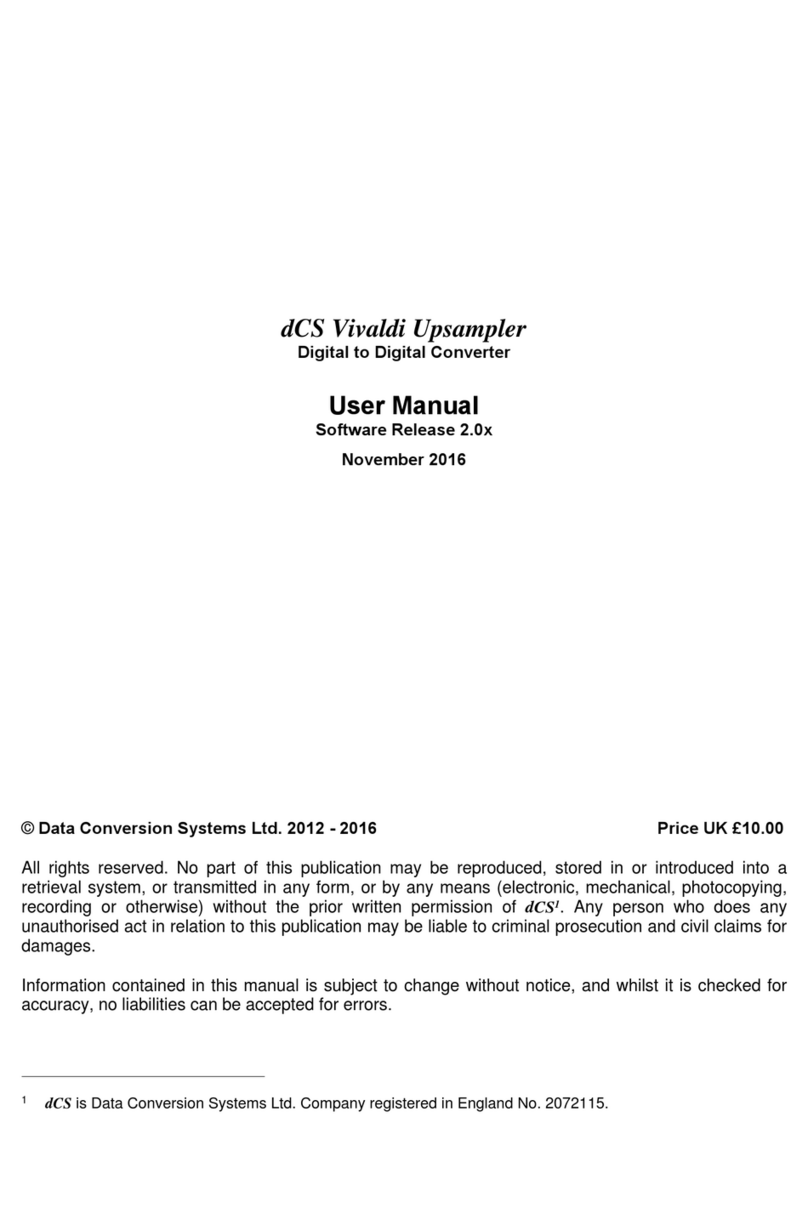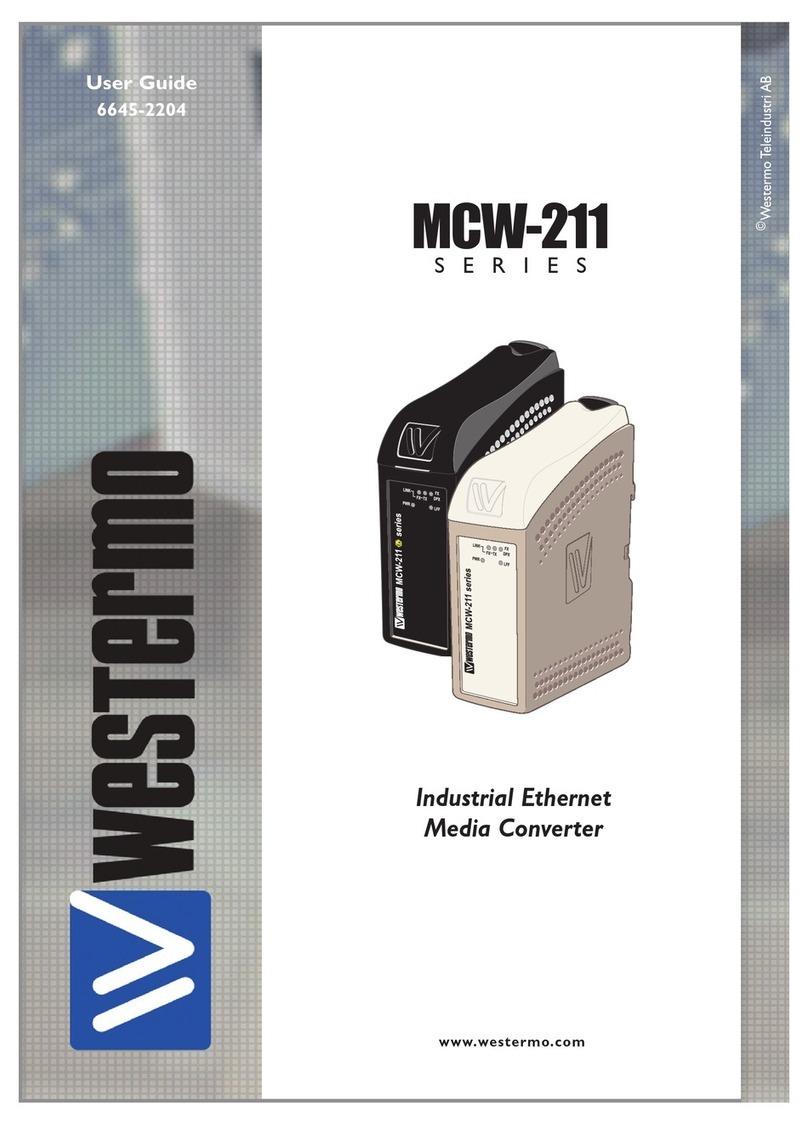OWNERS MANUAL FOR WEISS MEDUS D/A CONVERTER
Inp t So rce Connection, Selection and Synchronization
Connect so rces with sampling freq encies of 44.1, 48, 88.2, 96, 176.4 or 192kHz to the inp t
connectors at the back of the nit. Note that there are a total of fo r inp ts. The following
connectors are available:
Inp t # 1: one XLR and one RCA connector ( se either XLR or RCA at a time, i.e. yo may
connect two so rces sim ltaneo sly, b t only one so rce nit m st be switched on at a time).
Inp t # 2: The same as Inp t # 1 applies here.
Inp t # 3: one XLR and one USB connector ( se either XLR or USB at a time, i.e. yo may
connect two so rces sim ltaneo sly, b t only one so rce nit m st be switched on at a time).
Inp t # 4: one TOSLINK (optical) and one RCA connector ( se either TOSLINK or RCA at a time,
i.e. yo may connect two so rces sim ltaneo sly, b t only one so rce nit m st be switched on at
a time).
The inp t so rce p shb ttons correspond to the fo r inp ts as described above.
Inp t # 1 (left) and Inp t #2 (right) can act as an inp t for so rces s pporting the two wire
scheme, i.e. one cable per channel. The MEDUS a tomatically detects whenever s ch a so rce is
connected to inp ts #1 and #2 and switches to the appropriate conversion mode. In that mode
both LEDs of inp t #1 and #2 are lit. The two wire scheme is sed by some so rces with sampling
rates of 88.2kHz or higher.
If a valid AES/EBU or S/PDIF formatted signal is present at the selected inp t, the display indicates
the sampling rate and the word length (the n mber of active bits in a digital sample) of the inp t
signal. If the format and/or the sampling freq ency is not valid, the word “ nlocked” is shown in
the display. In that case the analog o tp ts are m ted.
The MEDUS a tomatically synchronizes to the incoming signal. If the sampling rate of the signal is
not within a range of +- 80ppm of one of the nominal sampling rates (44.1, 48, 88.2, 96, 172.4,
192kHz) then the bl e LED of the active inp t is flashing. The analog o tp ts are m ted in that
case.
The states of all settings are stored in non-volatile memory, i.e. the act al inp t selection, vol me
control etc. are retained when powering the nit off.
